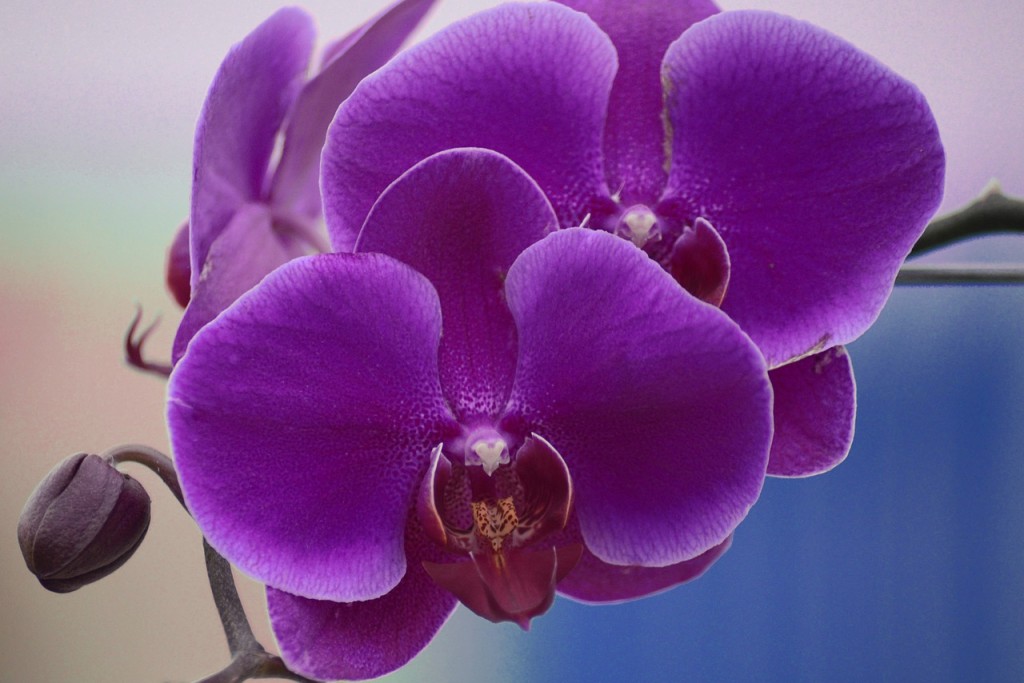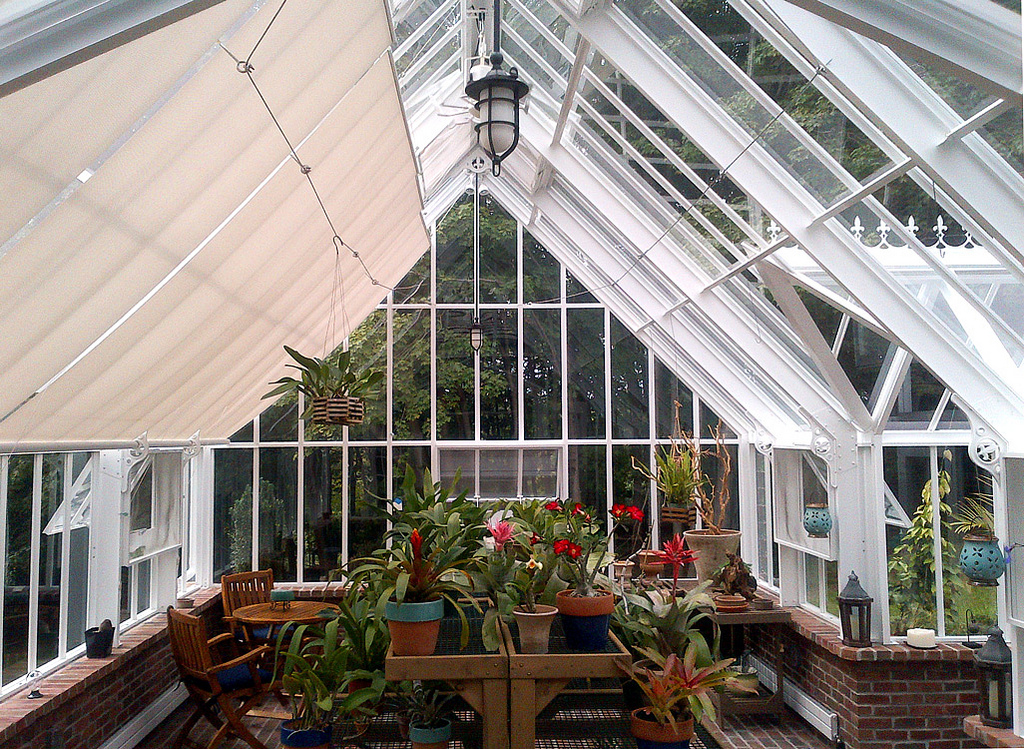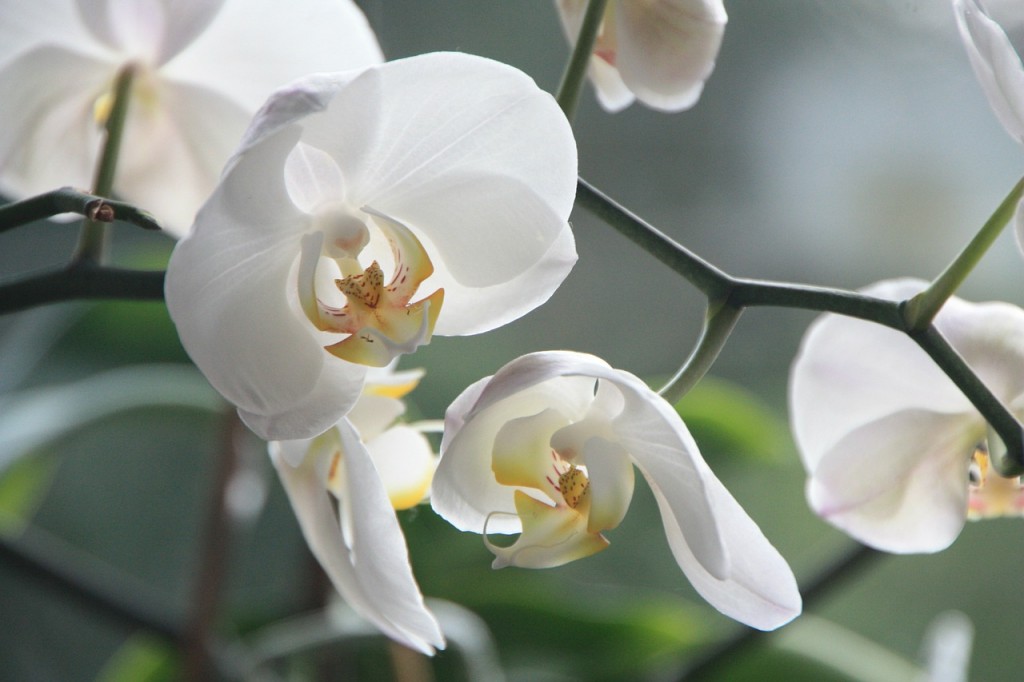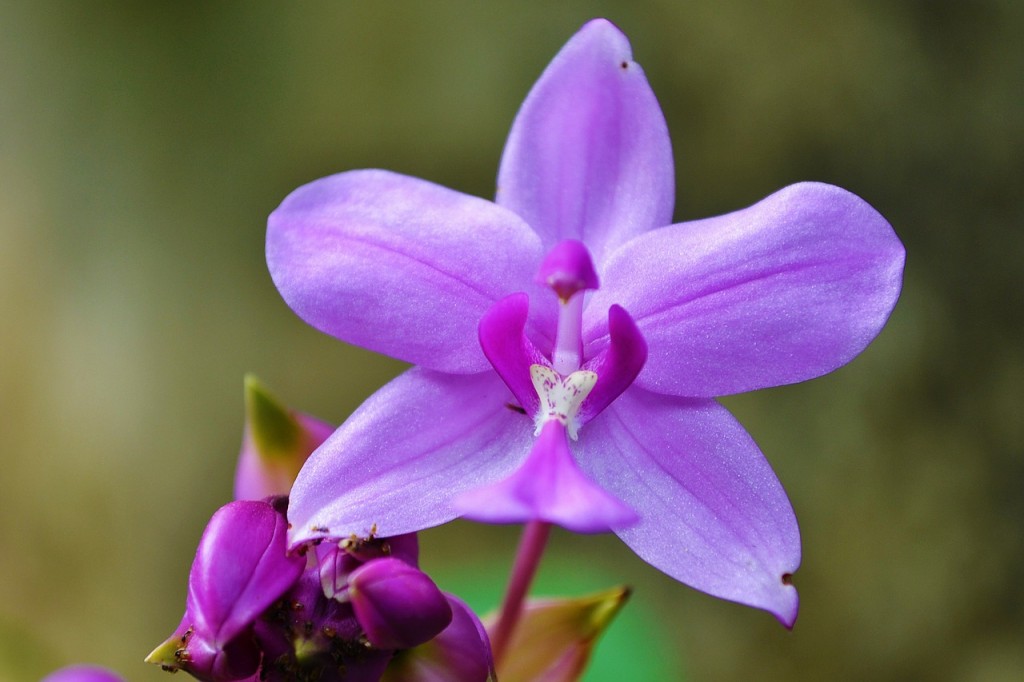
Having decided what species of orchid you want, you need to consider how to heat your greenhouse.
Many orchids have an aversion to the byproducts of propane or natural gas heaters, so this aversion limits the options in designing a heating system.
In my opinion, the best way to heat an orchid greenhouse is with a radiant-heat floor – that is, a floor with hot-water piping running through it.
The water is heated either by electricity or by a gas or oil burner located outside the greenhouse. Because heat rises, the greenhouse stays warm throughout.
Electric heating is good for an orchid greenhouse, but it can be expensive.
With any kind of electric heating, be it baseboard or a fan-style heater, you will need to add some moisture to the warm air, usually this is done with a separate fogger or mister.
In addition, you must be careful when watering or spraying your orchids.
Water and electricity do not mix and can make your eyes water should you inadvertently spray an electrical connection!
For this reason any electrical connections in the greenhouse should have a Ground Fault Interrupter (GFI) breaker to instantly cut off power should a short circuit occur.
If you use a portable electric heater to keep your greenhouse warm, make sure it is an oscillating fan type to keep warm air moving throughout the greenhouse.
By keeping warm moist air moving you reduce the threat of disease.
One final caveat, is that should electrical power go out in a snowstorm, for example, you may have to have some form of backup plan to protect your orchids.
Lighting

Many orchids are understory plants, meaning that they live underneath the forest canopy.
Light conditions in the understory can vary from quite bright sunshine to almost permanent shade.
So once again, you need to read up on the orchid species you plan to grow before placing them in your greenhouse.
In some cases, you may want to recreate the indirect light that the tree canopy produces by using shade mats over the top of your greenhouse.
On the other hand, much shade may not be needed depending on what you grow.
The Vanda genus, for example, contains many species that like bright light, making them good choices for unobstructed southern and east-facing exposures.
For plants that tolerate lower light levels, you can provide additional lighting using low-cost, low-heat LED or fluorescent bulbs. Incandescent bulbs may get too hot for orchids, plus spray from a mister can sometimes cause them to explode.
Watering and Fertilizing

In keeping with conditions in their natural habitats, the roots of most orchids should be kept moist.
The simplest way to do this is to lower the pot into a bucket of lukewarm (non-chlorinated) water whenever the pot feels dry. (You can test for dryness by lifting the pot. If it feels light, it’s too dry). In between dipping the plant in water, I spray orchid roots on a daily basis.
As for feeding, most orchids in the wild, whether epiphytes or terrestrials, are exposed to nutrients on a relatively irregular basis.
They get this food from rainwater, which mixes with decayed plant material and animal droppings as it washes down trees.
In your greenhouse, therefore, orchids need to be fed fairly often when in bloom and kept moist when not in bloom. As the plant comes into bloom, you should build up to a half-strength solution of orchid fertilizer about once every other week.
You can then soak the growing medium in plain water to help eliminate a buildup of fertilizer salts around the roots.
Because there is so much more to learn about orchids, I recommend reading a few good books on the subject.
It is wise to start with generalist books and move on to specialty ones later as your orchid population grows.
More information can be gleaned from joining a local orchid society and learning about the experiences of other growers who have a passion for orchids.
Orchid Medium

With many orchids being epiphytic it would appear that they do not need to be in a growing medium.
They do, but it is mostly for root support and to keep the area around the plant moist.
For this reason, most orchids are grown on or in the following materials: bark, charcoal, coir, cork, Osmunda fern, coarse peat moss, Perlite, sphagnum moss and rockwool.
Terrestrial orchids can usually be grown in terrestrial style-potting soils although you might want to add some grit to improve drainage.
Fir bark (mixed with a little charcoal to keep it fresh) is the preferred medium for orchids. it is available in fine, medium, and coarse grades.
In most cases, medium bark is used, with coarse grade reserved for plants with thick roots. But bark does not hold water well, and is often mixed with sphagnum moss, coarse peat moss or coir to improve moisture retention.
Cork bark is often used for mounting orchids. The orchid roots are left exposed to the air and need to sprayed regularly.
Coir is derived from coconuts and is often used where supplies of peat moss are endangered. It does not add nutrients, retains water reasonably well, but it can make the mixture a little alkaline.
Osmunda fern was the medium of choice for old time growers, but it has become expensive. Its fiberous roots are slow to break down, but they add nutrients to the media.
Sphagnum moss retains water very well and is often used for orchids sold in ‘big-box’ stores to help prevent the orchids from drying out.

However, it tends to break down quickly and overwatering can kill roots.
New Zealand Sphagnum moss does not break down as quickly, but is harder to find and usually more expensive.
Tree fern fiber is a new product from New Zealand that comes from natural tree ferns.
It breaks down far more slowly than most other mediums and is now beginning to find its place in the orchid world.
Perlite and Rockwool are products made from heating rocks and causing them to expand.
Perlite is white and looks somewhat like popcorn, while rock wool is green and for me at least, seems too artificial for use with orchids.
Both retain moisture quite well, but add no nutrients to the medium.










